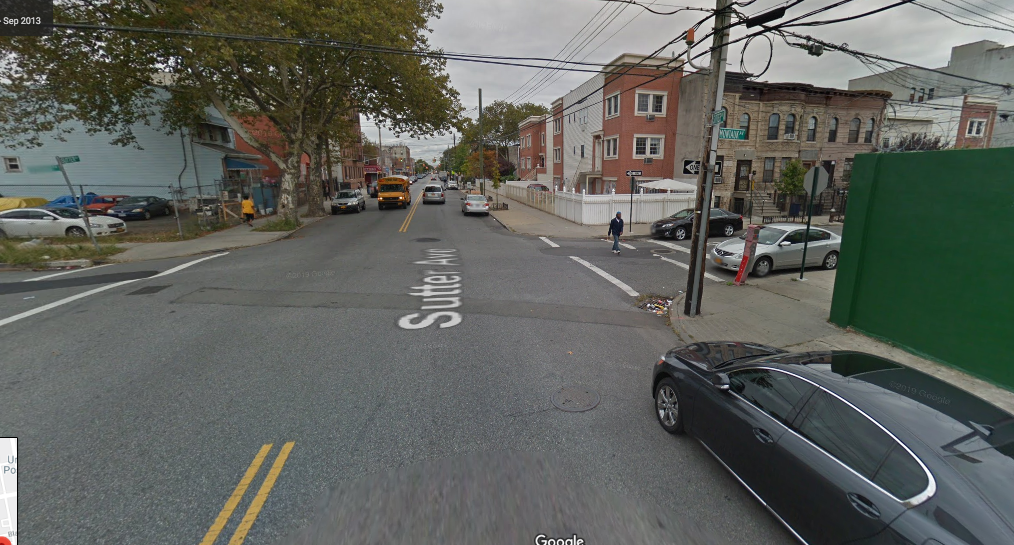Ten years ago, I was almost killed by a driver while biking on Sutter Avenue in Brownsville, Brooklyn. Last week, Ernest Askew was killed — only blocks from where I was hit.
On March 21, 2009, I left my mom’s birthday dinner by bicycle. Minutes later, hit, I lay face down on the ground, unable to move much of my body.
The driver who hit me stopped for a split second — just long enough for me to glance at a fuzzy license plate and see white smoke rise from his tires as he sped away. The next few hours at Brookdale Hospital were a blur of sirens, emergency-room equipment, and doctors’ faces; the next few months, a slow, painful journey back to recovery.
I was already a safe-streets advocate before the crash — in fact, Transportation Alternatives’ Brooklyn Committee chair — but being hit redoubled my drive to create safe streets for all New Yorkers.
Back then, the route I traveled on the day of the crash, through Brownsville/East New York in the eastern part of Brooklyn, was a bike-lane-free abyss of asphalt. Now, because of Vision Zero, the route has some bike lanes — but, sadly, not the protected lanes that could have saved Askew's life. Those lanes have only come to certain wealthier neighborhoods in Manhattan or close to it.
The bike-infrastructure inequities among neighborhoods are hard to square with Mayor de Blasio's stated goal of knitting together the "two cities" of New York. The Department of Transportation should seek to rectify those inequities as a basic matter of fairness.
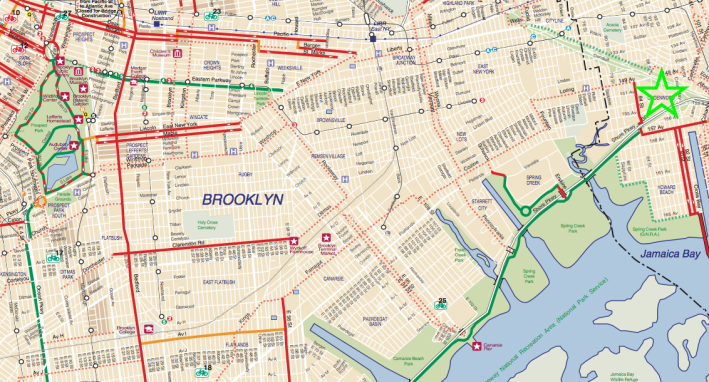
Now, winning any lanes for Brownsville took many meetings and several years. But all that work did not bring protected lanes, which make the roads safer for both cyclists and drivers. A decade after the city began expanding its bike lanes, we have learned that simple painted lanes do not suffice. At best, paint provides some way-finding and guidelines. But it typically fades in a year or so, especially when two-ton vehicles drive on it.

Some may argue that it’s impossible to upgrade the city’s many bike lanes to protected ones. Not true: It takes designers, funds and, most importantly, political will. A side-by-side comparison of the 2009 and 2019 bike maps show that the city has constructed many protected lanes in Manhattan, but not many in the outer boroughs — and especially not in poorer neighborhoods, such as Brownsville.
Yes, there may be more riders in Manhattan. But without protected lanes to encourage new riders in the outer boroughs, that trend will likely continue. We need a more complete safe-cycling infrastructure network citywide.
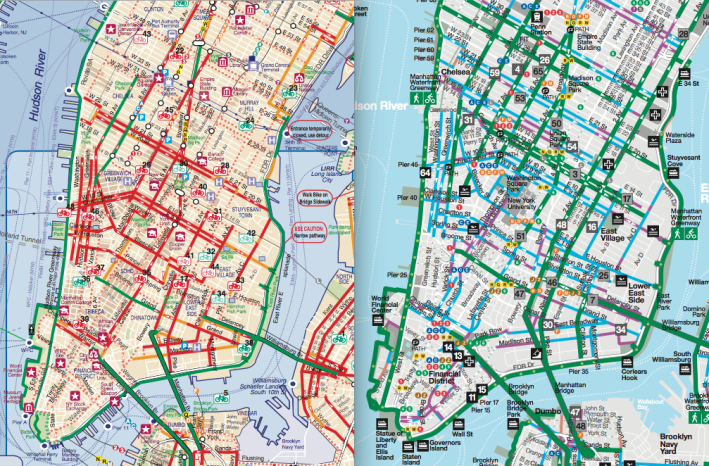
True, some areas of Brooklyn have reaped the benefits of Vision Zero.
DOT transformed Fourth Avenue in Park Slope from a high-speed motorway to a road where even elementary school kids can bike safely. After a terrible crash that claimed the life of two toddlers in a Ninth street crosswalk, the department overhauled the corridor to include protected lanes all the way to Prospect Park — a change that took only a year. Flatbush Avenue from Grand Army Plaza to Empire Boulevard along Prospect Park will get a protected bike lane (albeit more than three years after Brooklyn Borough President Eric Adams requested it).
But poorer, farther-out neighborhoods like Brownsville and East New York are a different story — one of neglect. Brownsville and East New York were to get a protected lane on a small part of Fountain Avenue, but that lane vanishes at Linden Boulevard, a behemoth roadway that DOT says “ranks in the top 10 percent of Brooklyn corridors by [killed or severely injured] crashes per mile among pedestrians, bicyclists and motor-vehicle occupants.” After years of study and community feedback, DOT has installed only a few crosswalk changes and turn restrictions on Linden Boulevard.
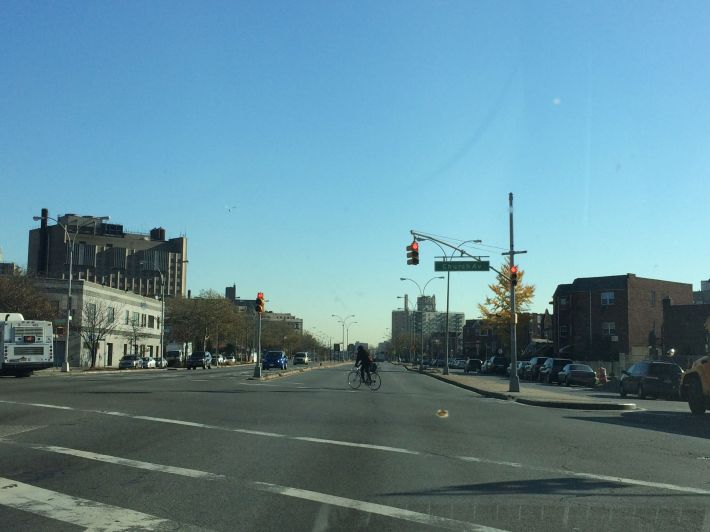
Moreover, DOT is presenting absurdly anachronistic ideas for some places in Brooklyn. Its plan for Cropsey Avenue in the South Brooklyn neighborhood of Gravesend shows a wide parking lane by the curb and a 5-foot pedestrian space by the median on this 86-foot roadway. The same design was rejected for the rebuilding of Fourth Avenue in Park Slope and replaced with 5-foot protected bike lane. Why is an upgrade that worked for one district not offered to another?
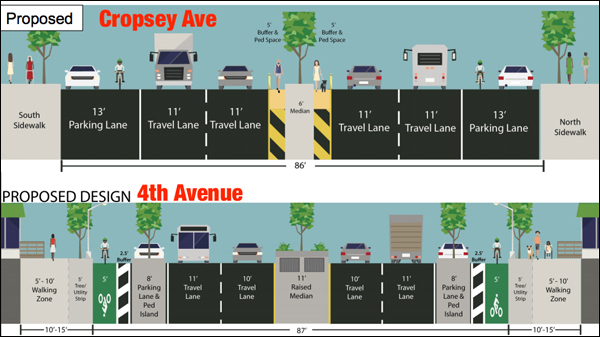
And even as Park Slope has enjoyed the benefits of a protected bike path on the west side of the park, riders east and south of the park, in Prospect Lefferts Gardens and Flatbush/East Flatbush remain vulnerable.
I remain optimistic Vision Zero can spread faster and more equitably across the city, thanks to unwavering advocates, growing safe-street support in the City Council and in Albany, and a deep bench of talent at DOT. City planners heroically maintain their composure when ignorant people scream bloody murder at the thought of adding a bike lane or taking a parking spot.
But there’s bloody murder on our streets: 15 cyclists dead this year — even as I wrote this story, a truck driver ran over a cyclist in Bushwick — surpassing the 10 fatalities of last year. DOT has the moral high ground to end this carnage. The administration needs to give it a green light.
I was lucky to survive on Sutter Avenue 10 years ago; Ernest Askew was not so lucky. We cannot allow another decade to go by with more carnage. In fact, we should not allow even a single day.
Dave "Paco" Abraham, a native New Yorker, owns a Surly Crosscheck bicycle, a Toyota Camry, and a green Yoyo stroller for his infant daughter. He wants to feel safe traveling in the city with each mode of transport.
